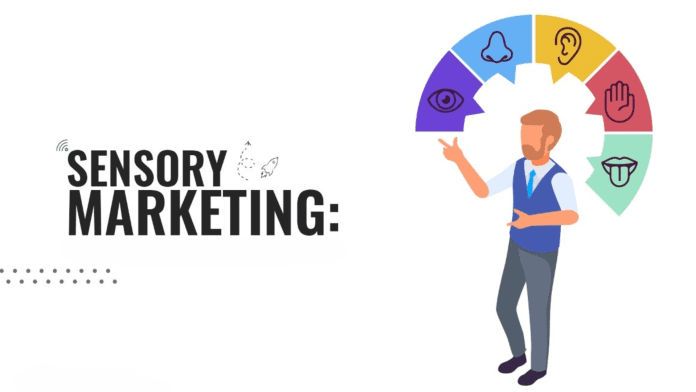It takes more than just catchy slogans and visually striking imagery to succeed in the ever changing field of marketing. Sophisticated marketers of today are delving into novel realms – the senses. Using sensory marketing is an engaging tactic that appeals to our senses and makes a lasting impression on us.
We live in a world of constant sensory bombardment. From the aroma of our morning coffee to the feel of our favorite clothing, our senses play a vital role in our daily lives. In the world of marketing, understanding how to harness this sensory input is becoming increasingly crucial.
Engaging the Five Senses
Effective sensory marketing targets our five primary senses: sight, hearing, taste, touch, and smell. By appealing to these senses, brands can create immersive and memorable experiences that resonate with consumers.
1. Sight: Visual Appeal
Visual stimuli are among the most potent in the marketing arsenal. Eye-catching logos, vibrant packaging, and compelling website designs are just a few examples of how brands engage our sense of sight.
2. Hearing: The Power of Sound
Think of the soothing melody when you open a well-designed app or the jingle that plays in your favorite fast-food restaurant. Sound can evoke emotions and create a strong brand association.
3. Taste: Culinary and Beverage Adventures
Food and beverage brands have long understood the influence of taste. The explosion of craft breweries and artisanal bakeries is a testament to our desire for unique taste experiences.
4. Touch: The Sense of Texture
The way a product feels in your hand can significantly impact your perception of its quality. Think of the smooth touch of an Apple product or the reassuring grip of a luxury car’s steering wheel.
5. Smell: Fragrance and Memory
The power of scent is undeniable. A familiar fragrance can transport you back in time, making it an invaluable tool in industries like perfumery, retail, and hospitality.
Influence on Consumer Behavior
Sensory marketing isn’t just about creating pleasurable experiences; it’s about influencing consumer behavior. Engaging the senses can evoke emotions. When a brand triggers positive emotions, it forms a deeper connection with its audience, leading to loyalty and repeat business. Sensory experiences create lasting memories. Brands that leave a sensory imprint tend to be more memorable and recognizable.
The senses can influence purchase decisions. Whether it’s the sight of a beautifully presented dish or the aroma of a freshly baked cookie, sensory cues play a role in what we choose to buy.
Strong sensory cues help in brand recognition. When consumers encounter a familiar scent, taste, or touch, they instantly associate it with a specific brand.
The Road to Success
To leverage sensory marketing effectively, brands should recognize the sensory preferences and expectations of your target audience. Different demographics may respond to different sensory cues.
Apart from that you should ensure that your sensory cues are consistent across all brand touchpoints, from your product packaging to your advertising. Authenticity in sensory marketing is paramount. Cues should align with your brand’s identity and values.
The Sensory Future
As we continue to be bombarded by information, brands that embrace sensory marketing stand out. By appealing to our senses, they create more profound connections, engage emotions, and influence consumer behavior. Sensory marketing isn’t just a trend; it’s a powerful tool that’s here to stay. As brands continue to explore the uncharted territory of sensory experiences, they’re set to redefine the marketing landscape, one sensory encounter at a time.





